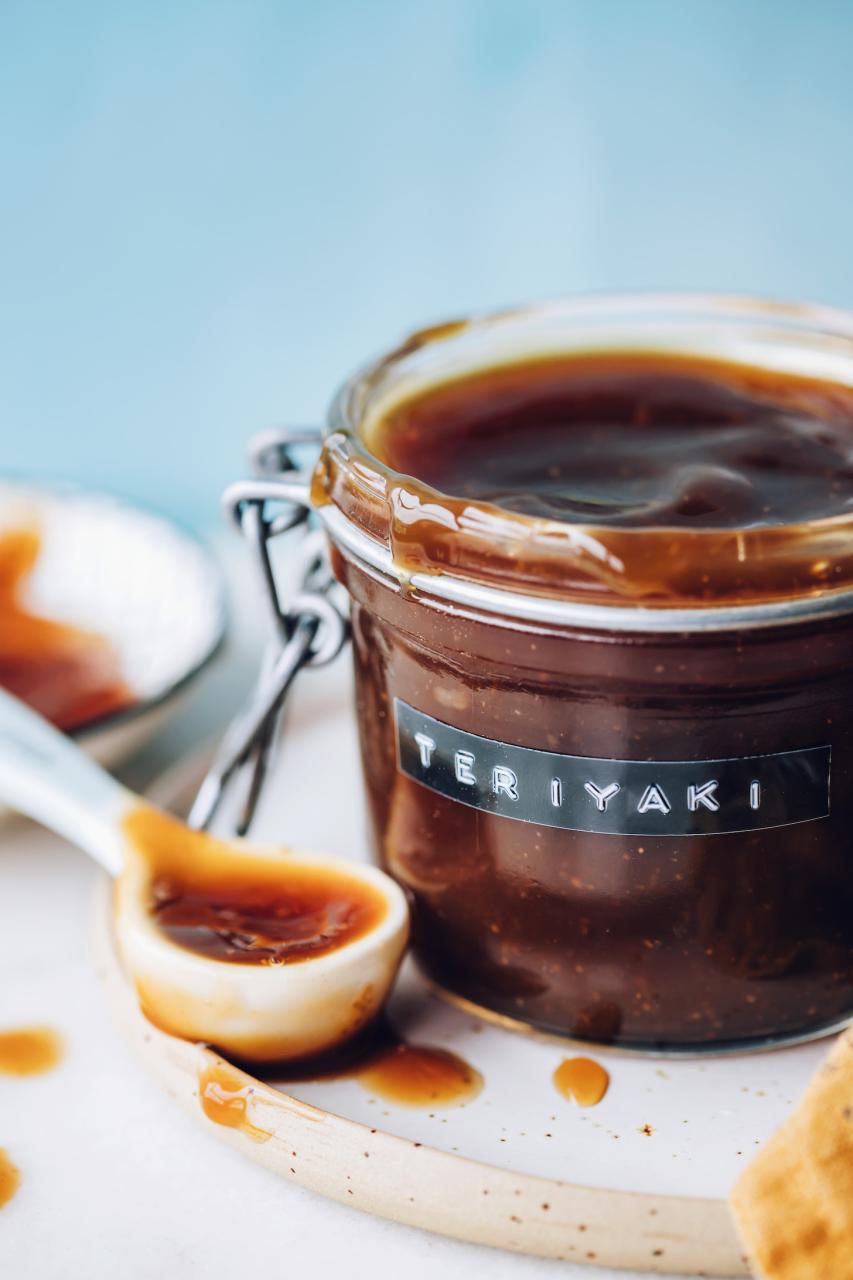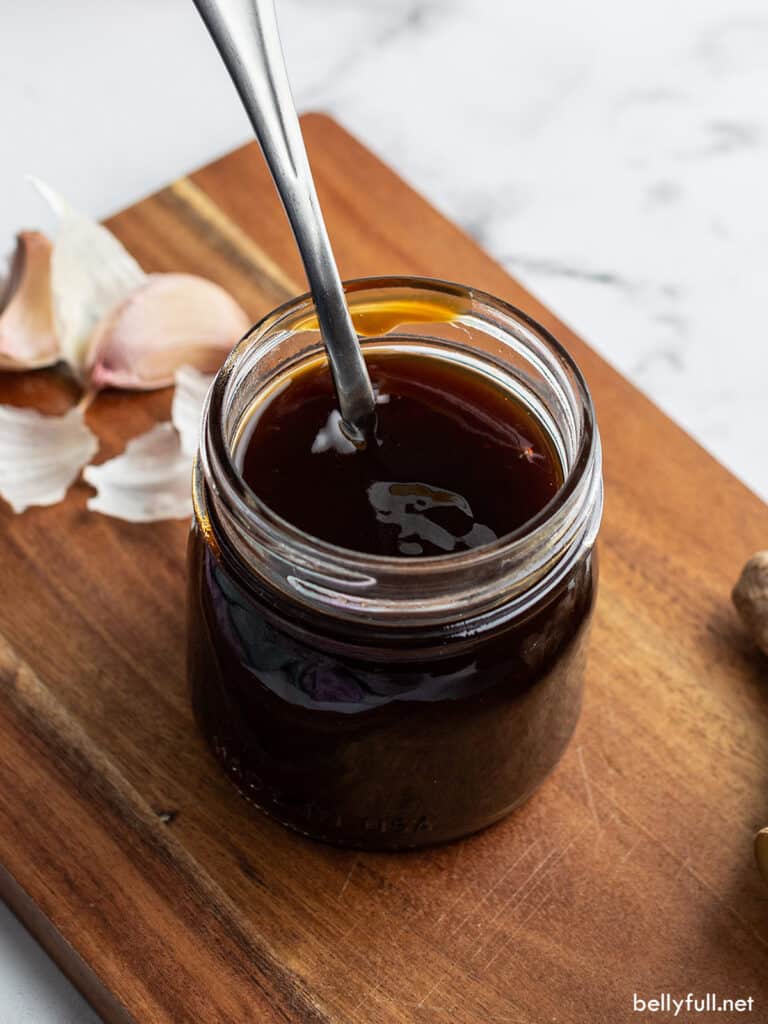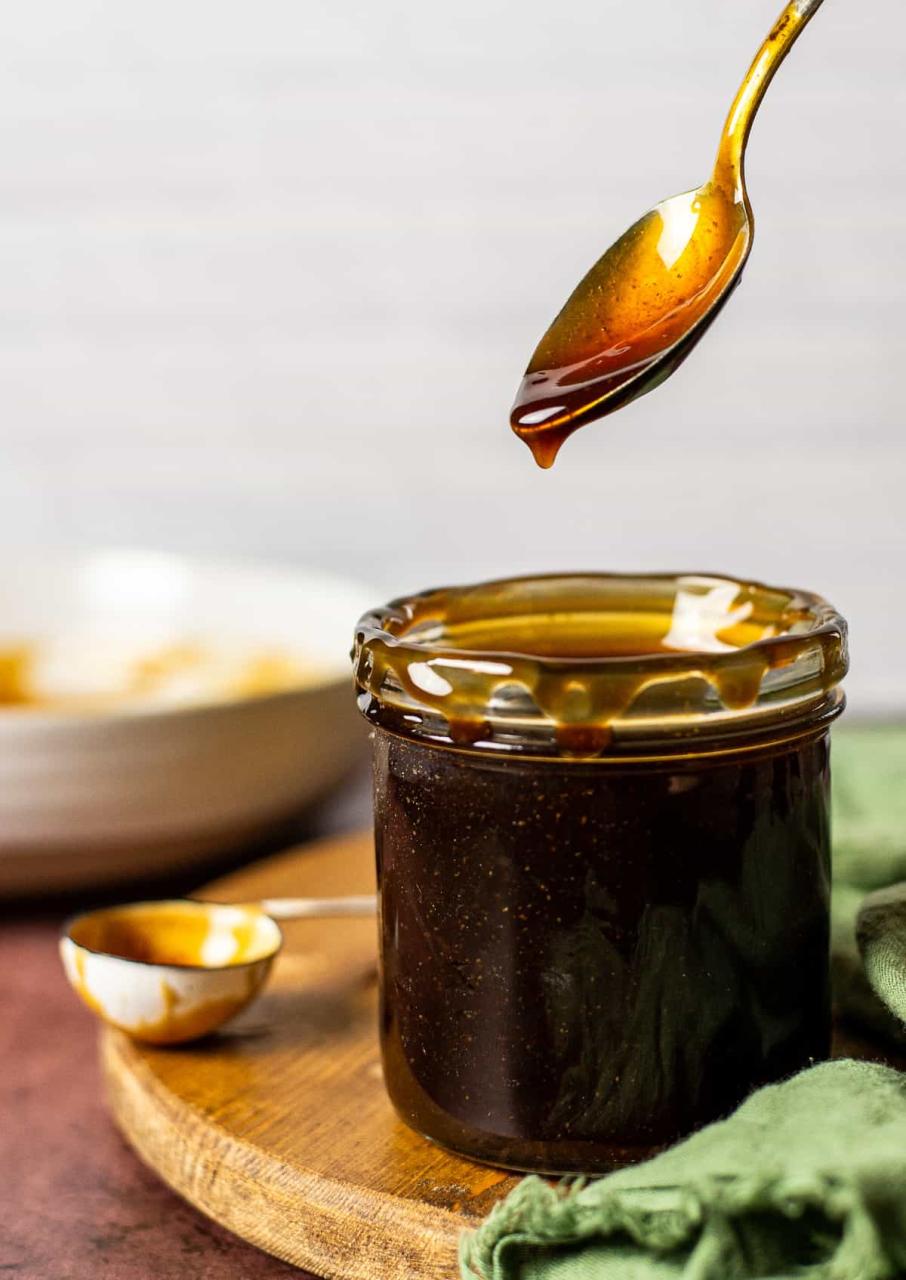Teriyaki sauce is a traditional Japanese condiment that has gained worldwide popularity due to its sweet and savory flavor profile, which can enhance a variety of dishes. The term “teriyaki” derives from the Japanese word “teri,” which refers to the shine or luster given by the sugar content in the sauce, and “yaki,” which indicates the cooking method of grilling or broiling. In Japan, teriyaki is commonly used as a marinade or glaze for grilled or broiled meats, particularly chicken, beef, and fish like salmon.
The basic components of homemade teriyaki sauce typically include soy sauce, a sweetening agent like sugar or honey, mirin (a type of rice wine similar to sake, but with less alcohol and more sugar content), and sake (a Japanese rice wine). These ingredients are combined and simmered to meld the flavors together and to allow the sauce to reduce to a thicker consistency. The simplicity of the ingredients allows for a straightforward preparation process; however, there’s room for personalization with the addition of ingredients like garlic, ginger, or a little sesame oil for added depth of flavor.
To prepare a simple homemade teriyaki sauce, one would start with equal parts soy sauce and mirin, then sweeten to taste with sugar or honey—keeping in mind the balance of flavors. For depth, finely grated fresh ginger and a clove or two of minced garlic can be added. These ingredients are cooked together over medium heat, allowing the sugar to dissolve and the sauce to thicken slightly. The resulting sauce is versatile and can be used immediately or stored in the refrigerator for later use.
The beauty of homemade teriyaki sauce lies in its adaptability. Cooks can adjust the sweetness, saltiness, and levels of garlic or ginger to their preference, which is a significant advantage over store-bought versions. Moreover, the homemade version avoids the preservatives and additives that are often found in commercial products.
Simple Homemade Teriyaki Sauce


Simple Homemade Teriyaki Sauce
Equipment
- 1 small mixing bowl
- 1 saucepan
Ingredients
- 1/4 cup tamari
- 2 tbsp rice vinegar
- 1/4 cup maple syrup
- 1 1/2 tbsp cornstarch
- 1/2 cup water
Instructions
- Combine the tamari, rice wine vinegar and maple syrup in a saucepan and cook over medium heat
- Place the cornstarch in a small mixing bowl, add water and whisk until well dissolved. Add the mixture to the saucepan and let it heat for 4 minutes, stirring constantly until smooth, thick and glossy texture is achieved.
- Remove from the heat and let it cool. If the sauce thickens as it cool, add little more water to thin out.
- Store in an air tight container and save in the fridge until time of serving, use within a week.
Cooking Tips about Simple Homemade Teriyaki Sauce

- High-Quality Ingredients: As with any recipe, the quality of your ingredients will impact the final taste. Use good-quality soy sauce for the base and opt for real mirin and sake for authenticity and depth of flavor.
- Balancing the Flavors: Teriyaki sauce should have a balance of sweet and savory with a hint of umami. Start with equal parts soy sauce and mirin, then add sugar or honey to taste, adjusting gradually to create the right balance.
- Ginger and Garlic: Fresh is best when it comes to ginger and garlic for your teriyaki sauce. Finely grate the ginger and mince the garlic before adding them to the sauce for the best infusion of flavors.
- Consistency: The sauce should have a slightly thickened consistency. You can achieve this by simmering the mixture on medium heat until it reduces by almost 25%, which intensifies the flavor and gives a glossy sheen. If you desire a thicker sauce, a slurry of cornstarch and water can be added toward the end of the cooking process.
- Simmering: Let the sauce simmer gently. High heat can burn the sugars, altering the flavor of your teriyaki sauce. Patience is key to letting the flavors meld properly.
- Variations: Feel free to personalize your teriyaki sauce by adding extra ingredients for depth of flavor. A splash of sesame oil, a pinch of chili flakes, or a squeeze of citrus juice can give your sauce a unique twist.
- Cool Before Storing: Allow the sauce to cool completely before storing it in an airtight container in the refrigerator. This prevents condensation which could dilute the sauce and affect its quality.
- Shelf Life: Homemade teriyaki sauce can usually last a long time due to the natural preservative qualities of sugar and soy sauce. It typically keeps well in the fridge for up to a month.
- Marinade: Teriyaki sauce doubles as an excellent marinade for meats, tofu, or vegetables. Coat your choice of protein or veggies and let it marinate for at least 30 minutes before cooking.
- Application: Brush the sauce onto food during the last few minutes of grilling or broiling to add a shiny glaze and prevent burning the sugars while maximum flavor is being absorbed.
Serving suggestions about Simple Homemade Teriyaki Sauce

- Marinade for Proteins: Use the teriyaki sauce as a marinade for meats like chicken, beef, or pork, as well as seafood such as salmon and shrimp, infusing them with rich flavor.
- Glaze during Cooking: Apply teriyaki sauce as a glaze while grilling or broiling to add a caramelized, shiny finish to various dishes, including kebabs and burgers.
- Stir-Fry Addition: Stir the sauce into vegetable or protein stir-fries, contributing both moisture and a depth of flavor to quick-cooked dishes.
- Dipping Sauce: Serve it as a dipping sauce with appetizers like dumplings, spring rolls, or tempura.
- Topping for Rice Bowls: Drizzle teriyaki sauce over rice bowls that feature a mix of vegetables, grains, and proteins for a boost of flavor.
- Condiment for Sandwiches: Spread a thin layer of teriyaki sauce on sandwiches and wraps, especially those with an Asian flair.
- Tofu and Vegetable Marinade: Use it as a flavorful marinade for tofu or vegetables before roasting or grilling to make them more appealing, especially in vegan or vegetarian diets.
- Base for Sauces and Dressings: Mix teriyaki sauce with other ingredients like mayonnaise or sesame oil to create novel sauces and salad dressings.
Top 5 FAQs about Simple Homemade Teriyaki Sauce

- What ingredients do I need for simple homemade teriyaki sauce? A basic homemade teriyaki sauce requires soy sauce and mirin as the primary ingredients. Sweetening is typically provided by sugar or honey, and for depth of flavor, you can add freshly grated ginger and minced garlic. Some recipes might also call for sake.
- How do I achieve the right balance of flavors in my teriyaki sauce? Start with equal parts soy sauce and mirin. Then, add sugar or honey gradually to find the sweet-savory balance you prefer. Taste as you go and adjust until you’re satisfied. Adding a small amount of ginger and garlic will contribute complexity to the flavor profile.
- Can I make teriyaki sauce without mirin? Yes, although mirin adds authenticity and sweetness to the sauce, you can substitute it with a mix of sugar or honey and another type of wine or rice vinegar if needed. Keep in mind that the taste may slightly differ from traditional teriyaki sauce.
- How thick should teriyaki sauce be and how do I thicken it? Teriyaki sauce is usually a bit thicker than soy sauce but not as thick as gravy. To thicken it, you can simmer the sauce until reduced or use a cornstarch slurry (mix a teaspoon of cornstarch with a tablespoon of water) added to the sauce while heating it until the desired consistency is achieved.
- How long does homemade teriyaki sauce last and how should I store it? Homemade teriyaki sauce should last for about a month in the fridge when stored in an airtight container. Ensure the sauce has cooled completely before storing to maintain its quality. Always check for signs of spoilage before use, such as off smell or mold.
Teriyaki sauce is a Japanese cooking sauce that is typically sweet and savory, often used as a marinade or glazing sauce for various dishes, especially meats such as chicken, beef, and fish. The name “teriyaki” derives from the noun “teri,” which refers to a shine or luster given by the sugar content in the sauce, and “yaki,” which refers to the cooking method of grilling or broiling. The sauce’s primary ingredients traditionally include soy sauce, a sweetener like sugar or honey, mirin (a type of rice wine), and sometimes sake (another variety of rice wine) along with additional flavorings such as garlic or ginger to enhance its taste.
The homemade version of teriyaki sauce offers several benefits. One can adjust the sweetness or saltiness according to personal preference, which can be useful for dietary considerations or specific taste profiles. Additionally, creating the sauce at home allows for the exclusion of preservatives and additives commonly found in store-bought sauces, making it a healthier option for those who are mindful of their intake of such ingredients.
Leave a Reply